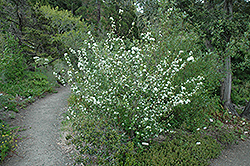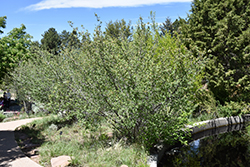It's all about ...
plants

Height: 15 feet
Spread: 10 feet
Sunlight:
![]()
![]()
Hardiness Zone: 3a
Description:
A hardy cultivar with beautiful white flowers in early spring and abundant, bird attracting berries in June; extremely versatile shrub for the landscape; can be trimmed and maintained as a small tree
Ornamental Features
Utah Serviceberry is primarily grown for its highly ornamental fruit. The fruits are showy brick red pomes carried in abundance from late spring to early summer. It is blanketed in stunning clusters of white flowers rising above the foliage from early to mid spring before the leaves. It has grayish green deciduous foliage. The textured oval leaves turn an outstanding yellow in the fall.
Landscape Attributes
Utah Serviceberry is a multi-stemmed deciduous shrub with an upright spreading habit of growth. Its relatively fine texture sets it apart from other landscape plants with less refined foliage.
This shrub will require occasional maintenance and upkeep, and is best pruned in late winter once the threat of extreme cold has passed. It is a good choice for attracting birds to your yard, but is not particularly attractive to deer who tend to leave it alone in favor of tastier treats. It has no significant negative characteristics.
Utah Serviceberry is recommended for the following landscape applications;
- Hedges/Screening
- General Garden Use
- Naturalizing And Woodland Gardens
Planting & Growing
Utah Serviceberry will grow to be about 15 feet tall at maturity, with a spread of 10 feet. It tends to be a little leggy, with a typical clearance of 2 feet from the ground, and is suitable for planting under power lines. It grows at a medium rate, and under ideal conditions can be expected to live for approximately 25 years. This is a self-pollinating variety, so it doesn't require a second plant nearby to set fruit.
This shrub does best in full sun to partial shade. It prefers to grow in average to moist conditions, and shouldn't be allowed to dry out. It is not particular as to soil type or pH. It is somewhat tolerant of urban pollution. This species is native to parts of North America.

